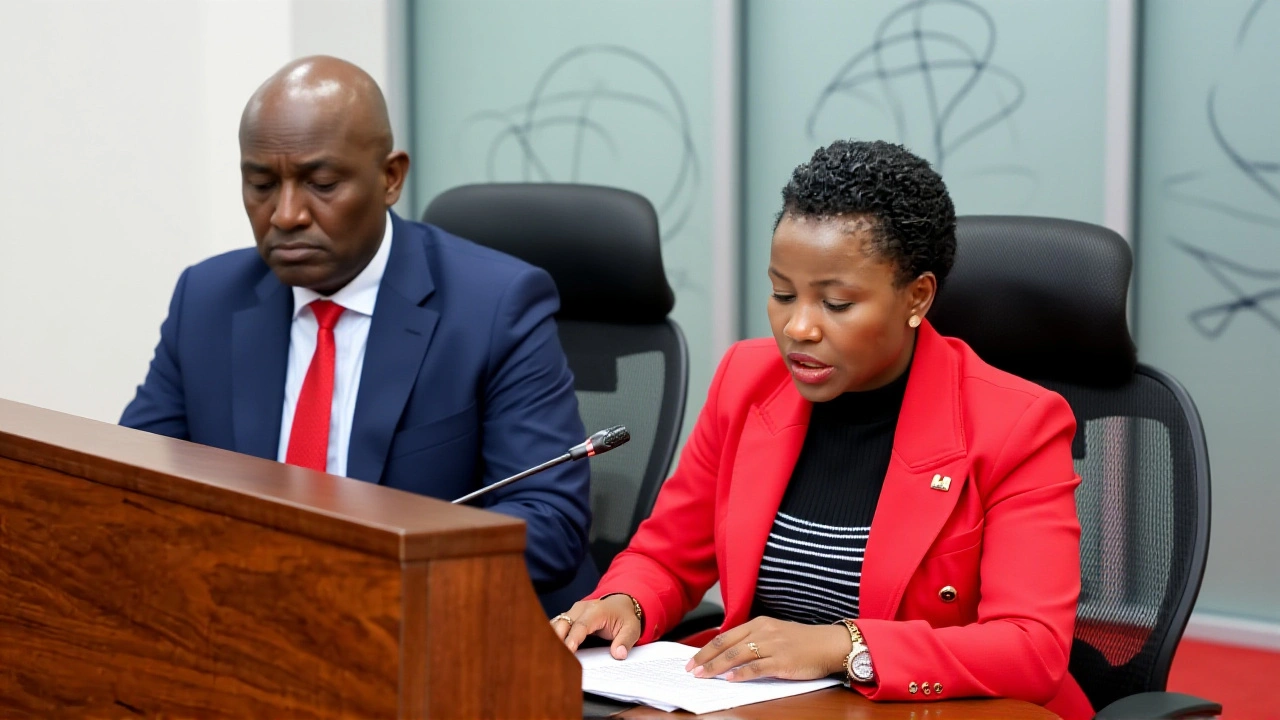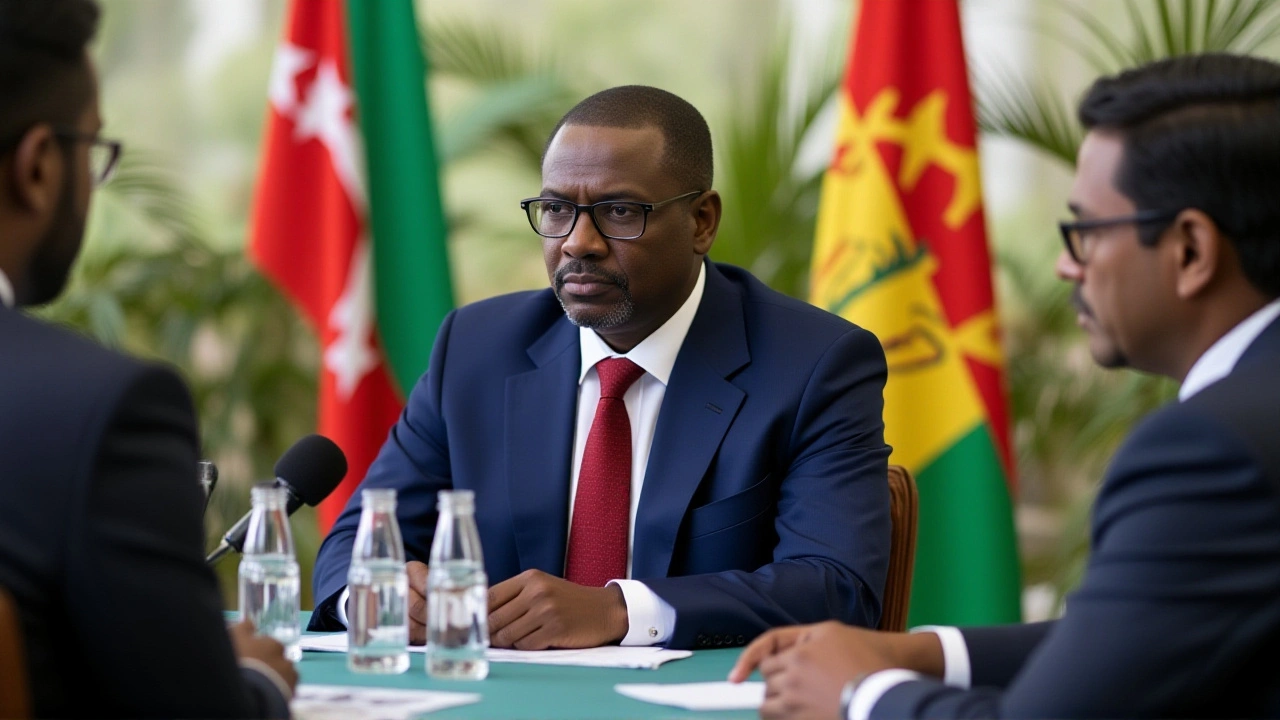When William Ruto, President of Kenya, issued a sweeping directive on Friday, October 3, 2025, the country’s 47 counties suddenly found themselves on a tight schedule.
The order, delivered from State House Nairobi, requires every Principal Secretary (PS) to travel to each county beginning Monday, October 6, 2025, to coordinate the launch of the NYOTA Programme – a Ksh 5 billion, World Bank‑funded effort that will hand out Ksh 50,000 business grants to 100,000 young Kenyans.
Background: From International Youth Day to a Ksh 5 billion rollout
The seeds of NYOTA were sown on International Youth Day, August 12, 2025, during an event at Masinde Muliro University in Kakamega. At that International Youth Day celebrationKakamega, William Ruto announced the partnership between the Kenyan government and the World Bank to create a multi‑component youth empowerment package.
The initiative is shepherded by the State Department for Youth Affairs and the Creative Economy, which has been tasked with aligning grant disbursement, on‑job experience (OJE) placements, Recognition of Prior Learning (RPL) certifications, and Access to Government Procurement Opportunities (AGPO) training.
Implementation plan: Principal Secretaries hit the road
In the State House briefing, the President commanded, “On Monday, October 6, all Principal Secretaries will be in every county to meet governors, MPs, MCAs, and chiefs to sensitize leaders and youth on the NYOTA Programme and align its implementation at the grassroots.”
Each PS will conduct a county‑wide tour, holding town‑hall style sessions in every ward (1,450 in total). The goal: verify that 70 eligible youths per ward are identified, vetted, and ready to receive the Ksh 50,000 grant.
To keep the rollout transparent, the government has set up a live dashboard on the NYOTA website where the number of approved beneficiaries per ward will be updated daily. The dashboard is also linked to the World Bank’s monitoring system, ensuring that every disbursement is traceable.
What the NYOTA Programme delivers
- Business Support: Ksh 50,000 grant to 100,000 youths (70 per ward).
- On‑Job Experience: 90,000 placements in private‑sector firms and public‑sector agencies.
- Recognition of Prior Learning: 20,000 RPL certificates for informal‑sector workers.
- Government Procurement Training: 600,000 youths educated on accessing AGPO contracts.
Eligibility is narrow but purposeful: Kenyan citizens aged 18‑29 (up to 35 for persons with disabilities) who hold a valid National ID, have a personal SIM card, and have completed secondary school but not pursued tertiary education. Over 1 million applications have already poured in for the Business Support pillar.
The first wave – 54,000 grant recipients – began receiving funds in September 2025, a month before the renewed registration window opened (October 6‑12, 2025). According to Susan Mang'eni, Principal Secretary for MSME Development, the early cohort “has already started small kiosks, mobile charging stations, and agro‑processing units in their communities.”
Reactions from officials and civil society
“NYOTA is a game‑changer for youth unemployment,” said Susan Mang'eni, who highlighted a “50‑50 gender parity” target across all components. She added that the grant size was calibrated after a feasibility study showed Ksh 50,000 is enough to purchase essential inventory for most micro‑enterprises.
Opposition leader Peter Tabichi cautioned that “without robust auditing, we risk duplication and fraud.” Tabichi’s party called for an independent parliamentary committee to oversee the grant distribution.
Local youth groups have been vocal, too. The Kenya Youth Federation (KYF) released a statement saying the program “offers hope, but the registration platform must be accessible to those in remote areas where internet connectivity is spotty.” In response, the State Department pledged to set up physical registration kiosks in all sub‑county offices.

Looking ahead: Challenges and next steps
While the rollout appears orderly, several hurdles remain. First, the sheer volume of applications – over one million for the grant alone – puts pressure on the verification system, which relies on biometric matching and manual cross‑checks with the national census database.
Second, ensuring gender parity will demand deliberate outreach. Early data from the pilot in Mandera County shows only 42 % of grant recipients are women, prompting the Ministry to launch a targeted “Women in Business” campaign.
Third, the integration of OJE placements with private‑sector firms hinges on the willingness of companies to absorb trainees without immediate profit pressure. The government is offering tax incentives to firms that take on at least five NYOTA trainees annually.
Finally, long‑term impact measurement will be crucial. The World Bank has stipulated a mid‑term evaluation in June 2026 to assess business survival rates, job creation numbers, and the multiplier effect of procurement training.
If the pilot’s early success stories hold up, NYOTA could become a template for other East African nations grappling with youth unemployment.
Key facts at a glance
- Program budget: Ksh 5 billion (≈ US$40 million) funded by the World Bank.
- Grant amount: Ksh 50,000 per beneficiary.
- Total beneficiaries: 100,000 youths across 1,450 wards.
- Rollout start for PS visits: October 6, 2025.
- Application window (re‑opened): October 6‑12, 2025.
Frequently Asked Questions
How does NYOTA select the 70 grant recipients per ward?
Selection is based on a points‑system that rewards unemployed youth who hold a valid ID, a personal SIM, and a completed secondary education. Applicants are screened against the national database to confirm eligibility, then ranked by need and geographic representation. The final list is signed off by the County Commissioner.
What support does the programme give beyond the cash grant?
NYOTA bundles three complementary tracks: on‑job experience placements for 90,000 youths, Recognition of Prior Learning certificates for 20,000 informal workers, and procurement‑training modules for 600,000 participants, all designed to boost employability and market access.
Which agencies are responsible for monitoring the grant disbursement?
The State Department for Youth Affairs and the Creative Economy leads the monitoring, supported by the World Bank’s finance‑tracking portal and an independent parliamentary oversight committee that will receive quarterly reports.
What happens if a grant recipient misuses the Ksh 50,000?
Misuse triggers a recovery process: the Ministry can demand repayment, and repeat offenders are barred from future NYOTA benefits. The oversight system flags irregular expenses through quarterly audits.
When will the next batch of grants be released?
After the October 6‑12 registration window closes, verification will take two weeks. The second wave of disbursements is slated for the first week of November 2025, contingent on the audit results.


jyoti igobymyfirstname
October 7, 2025 AT 03:53Grant thng is lit!!! 🙈
ritesh kumar
October 17, 2025 AT 06:43The rollout is a classic top‑down agenda, quietly funneling resources that bind Kenya to external financiers.
Raja Rajan
October 27, 2025 AT 09:32The NYOTA programme aims to distribute Ksh 50,000 to 100,000 youths, with eligibility criteria clearly outlined.
Atish Gupta
November 6, 2025 AT 12:21The government’s decision to send every Principal Secretary to the counties reflects an unprecedented level of coordination.
By meeting governors, MPs and local chiefs, the PSs can verify the list of eligible youths on the ground.
The Ksh 5 billion budget, sourced from the World Bank, is intended to create a ripple effect across the informal sector.
Each of the 1,450 wards must identify 70 candidates, which translates to a massive data‑gathering exercise.
The live dashboard promises transparency, allowing citizens to track disbursements in real time.
However, the biometric matching system still depends on the accuracy of national ID records, which have known gaps.
Gender parity remains a challenge; early figures show women receiving only 42 % of grants in some pilot counties.
Targeted outreach campaigns, such as the “Women in Business” drive, are essential to correct that imbalance.
Beyond cash, the program’s on‑job experience placements could bridge the gap between education and employment.
Private‑sector firms are being incentivised with tax breaks to host trainees, but their willingness is still being tested.
The Recognition of Prior Learning certificates will formalise skills that many informal workers have honed over years.
Access to Government Procurement Opportunities training equips youths with knowledge to bid for public contracts.
If the World Bank’s mid‑term evaluation in June 2026 finds sustainable business survival, the model could be replicated in neighboring countries.
Community leaders must also guard against fraud, as opposition voices have warned about potential duplication.
Overall, the program’s multi‑track approach blends financial support with capacity building, offering a holistic solution to youth unemployment.
Continued monitoring and community participation will determine whether NYOTA lives up to its ambitious promise.
Aanchal Talwar
November 16, 2025 AT 15:11Totally agre, the multi‑track setp could really lift many families.
Apu Mistry
November 26, 2025 AT 18:00The grant, like a seed, finds its soil in the hopes of a generation, yet the wind of bureaucracy may scatter its potential.
uday goud
December 6, 2025 AT 20:50Indeed, the metaphor captures the delicate balance; however, without robust oversight-transparent audits, community watchdogs, and clear accountability-such seeds risk being choked by systemic inefficiencies!